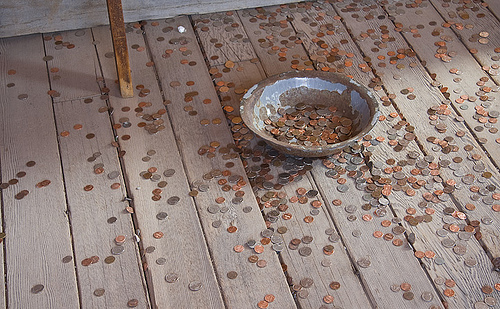Change the conversation, support rabble.ca today.
Statistics Canada’s release on the escalating incomes of the top 1 per cent gained a lot of media coverage — and also provoked some very defensive reactions by major organs of the Canadian media.
This included an almost rabid column by Financial Post editor Terence Corcoran accusing Statistics Canada of engaging in class warfare and, in a McCarthyite manner, personally attacking some of their existing and former employees. (I guess he doesn’t read the New York Times much, where that well-known communist Warren Buffett was quoted as saying “There’s class warfare, all right, but it’s my class, the rich class, that’s making war, and we’re winning.”)
The Globe also weighed in with an editorial urging us to “Hug the 1 per cent” claiming they get a bad rap and that they are a net benefit to Canada because they pay more than their share in income taxes. The Globe editorialists forgot about the other taxes Canadians pay. When all those other taxes (sales, payroll, property) are considered, the top 1 per cent actually pay a lower share of their income in taxes than all other income groups, including the poorest 10 per cent, as the CCPA’s comprehensive analysis demonstrated.
Another notable reaction was that the income of the top 1 per cent, with a median of $283,400, isn’t that high. (Of course, that raises the question: if $283K isn’t that high, how low does that mean the median of $28K for the 99 per cent is?). If anything, Statistics Canada downplayed the incomes of the top 1 per cent and our growing income gap. For instance, the average mean (as opposed to median) income of the top 1 per cent was actually $429,600 in 2010. The real incomes of the top 1 per cent almost doubled (up by 96 per cent) in the 25 years from $251,250 in 1982 to $492,900 in 2007 (in 2010$).
Meanwhile the average real income of the bottom 90 per cent increased by only 5 per cent over this quarter decade from $27,600 in 1982 to $29,300 in 2010.
There’s a wealth of other data associated with this release now freely available for analysis on the Statscan website, with lots of detail by city and region.
For instance, the data show that the average income tax rate paid by the top 1 per cent declined from 40.6 per cent in 1997 down to 33.3 per cent in 2010. If these top 1 per cent taxpayers (slightly more than 250,000 individuals) were taxed at the same average rate as they were in 1997, our governments would have an extra $8 billion a year in revenue.
By province, if the average income tax rate on the top 1 per cent in Ontario in 2010 was the same as in the late 1990s, they would have paid an additional $2.9 billion in taxes. In Quebec, the top 1 per cent would have paid an extra $1.2 billion. If Alberta’s richest 1 per cent paid the same rate of income tax in 2010 as they had in 1997, they would have paid an extra $2 billion in taxes and in B.C. if the top 1 per cent paid the same rate of tax in 2010 as they did in 1997, it would have provided an extra $1.3 billion in revenue.
The drop in average taxes paid by the top 1 per cent wasn’t because of a cut in the top federal marginal income tax rate, which has been 29 per cent since 1988, but was caused both by an expansion of tax loopholes (with lower rates on capital gains and stock options) and by provincial cuts to top income tax rates, such as Alberta’s shift to a 10 per cent flat tax rate.
And in these times of continuing fiscal concern, these are the some ways we can regain these revenues: by closing tax loopholes and raising provincial top income tax rates. And if the top 1 per cent paid their fair share of tax, they might get a little more love from the rest of us.
Photo: Alan Grinberg/Flickr



